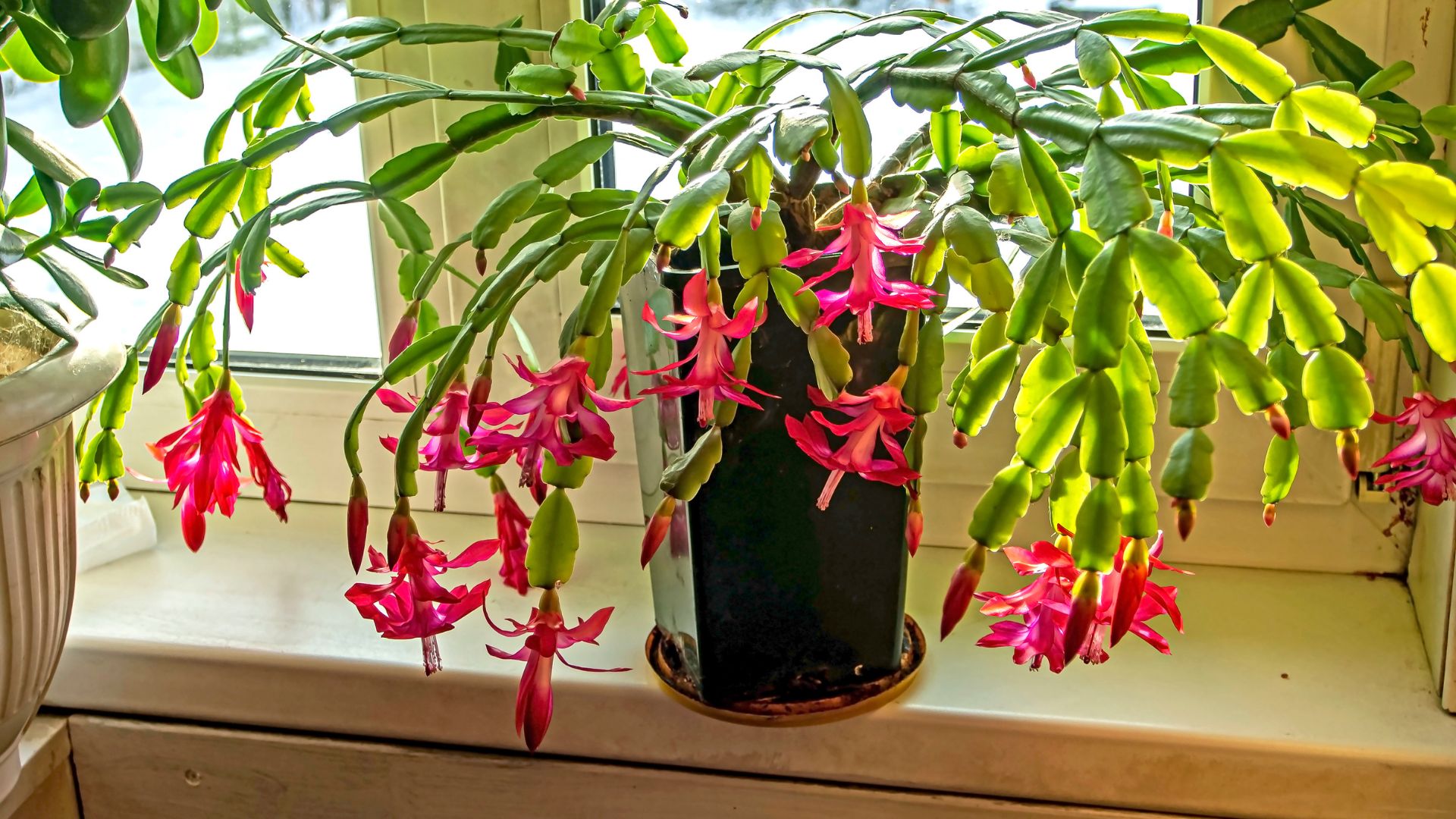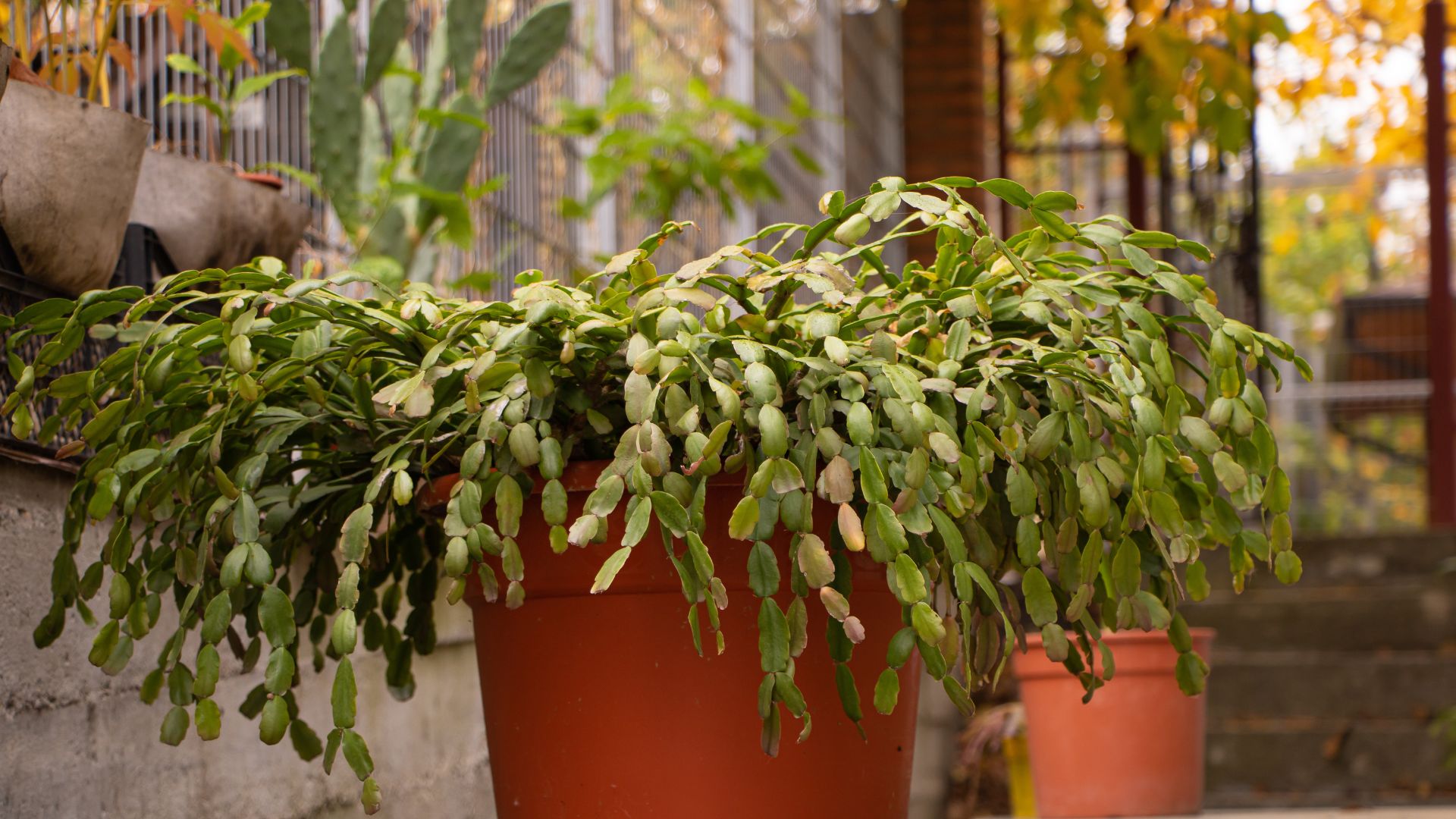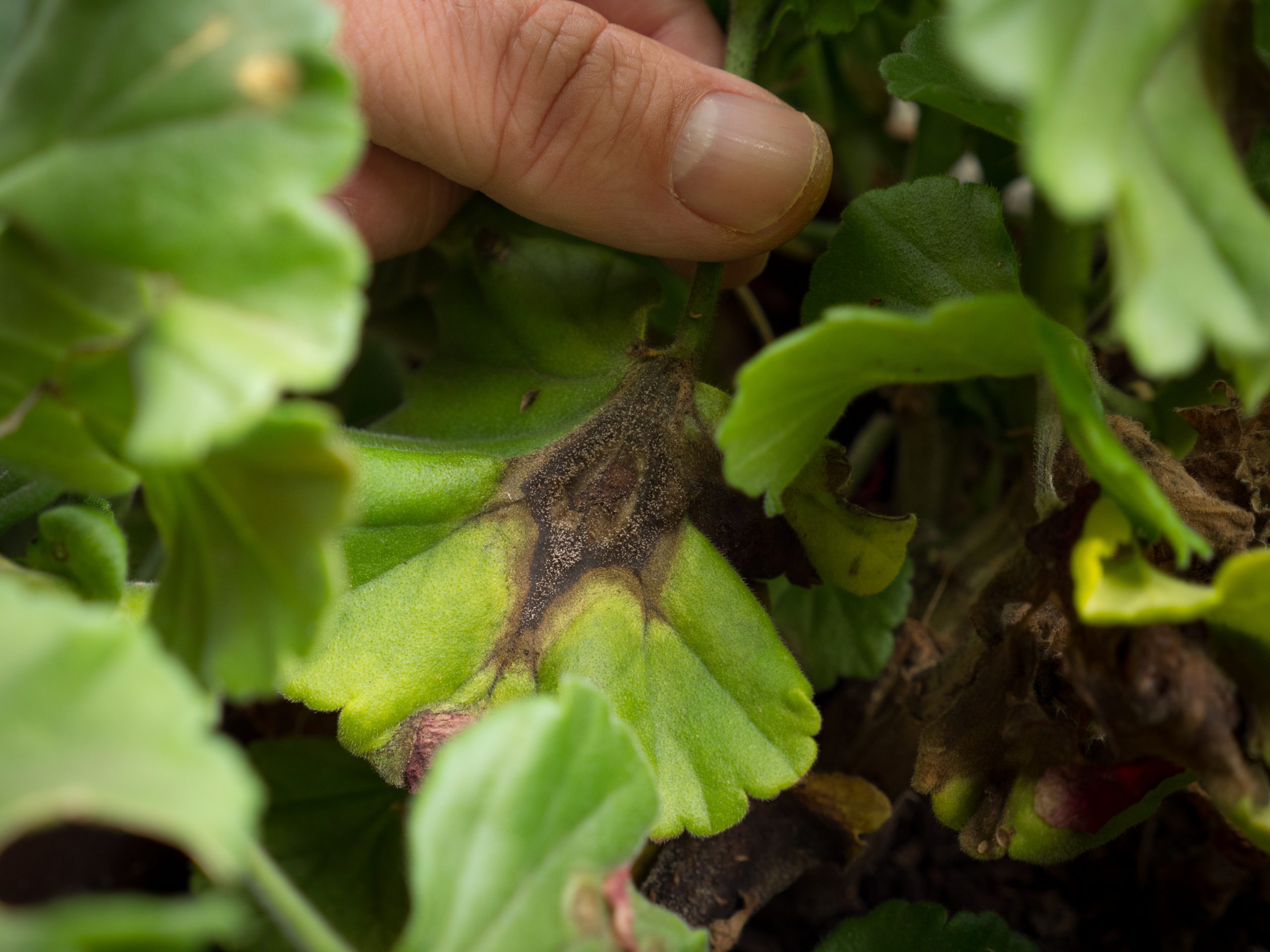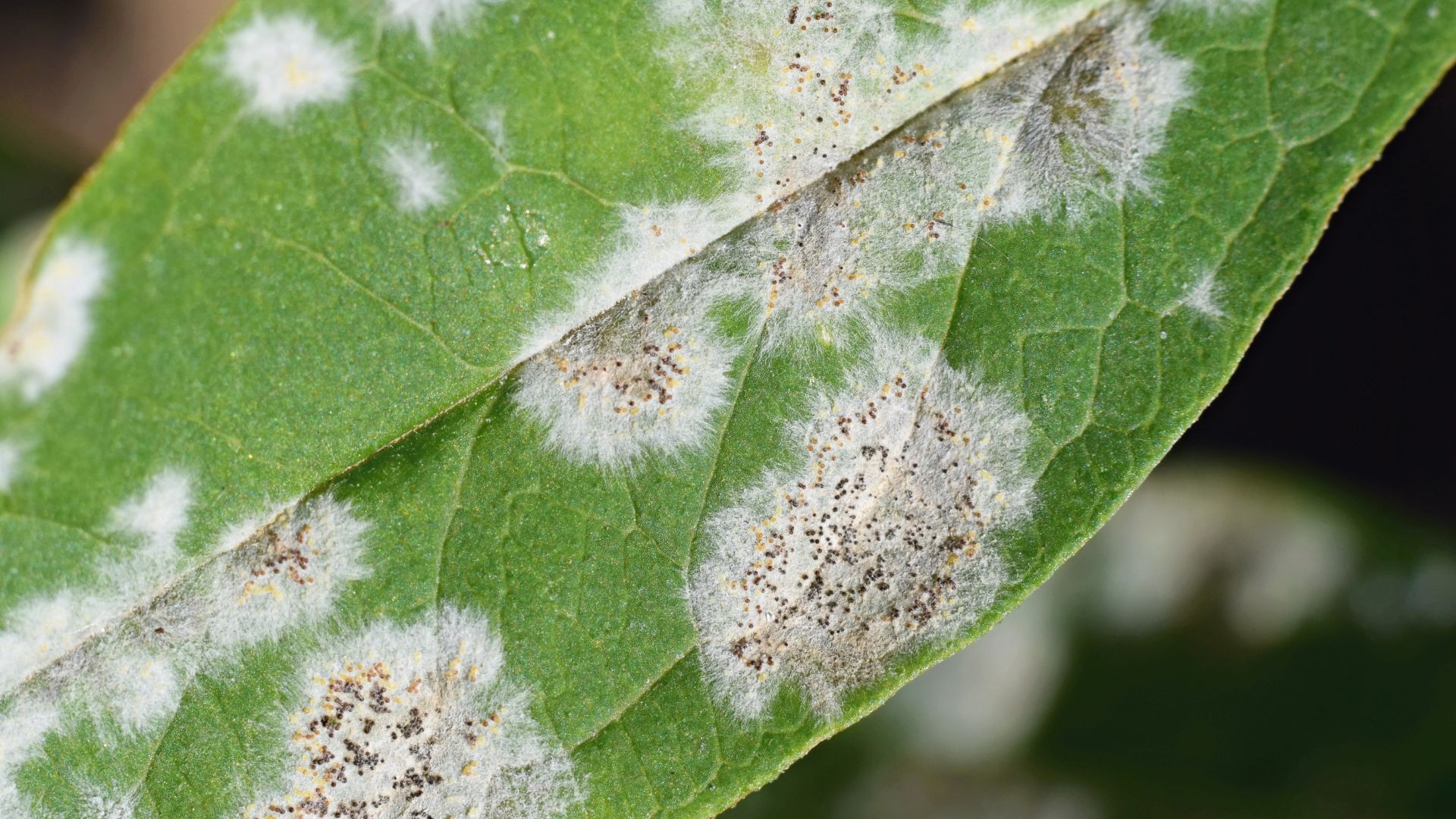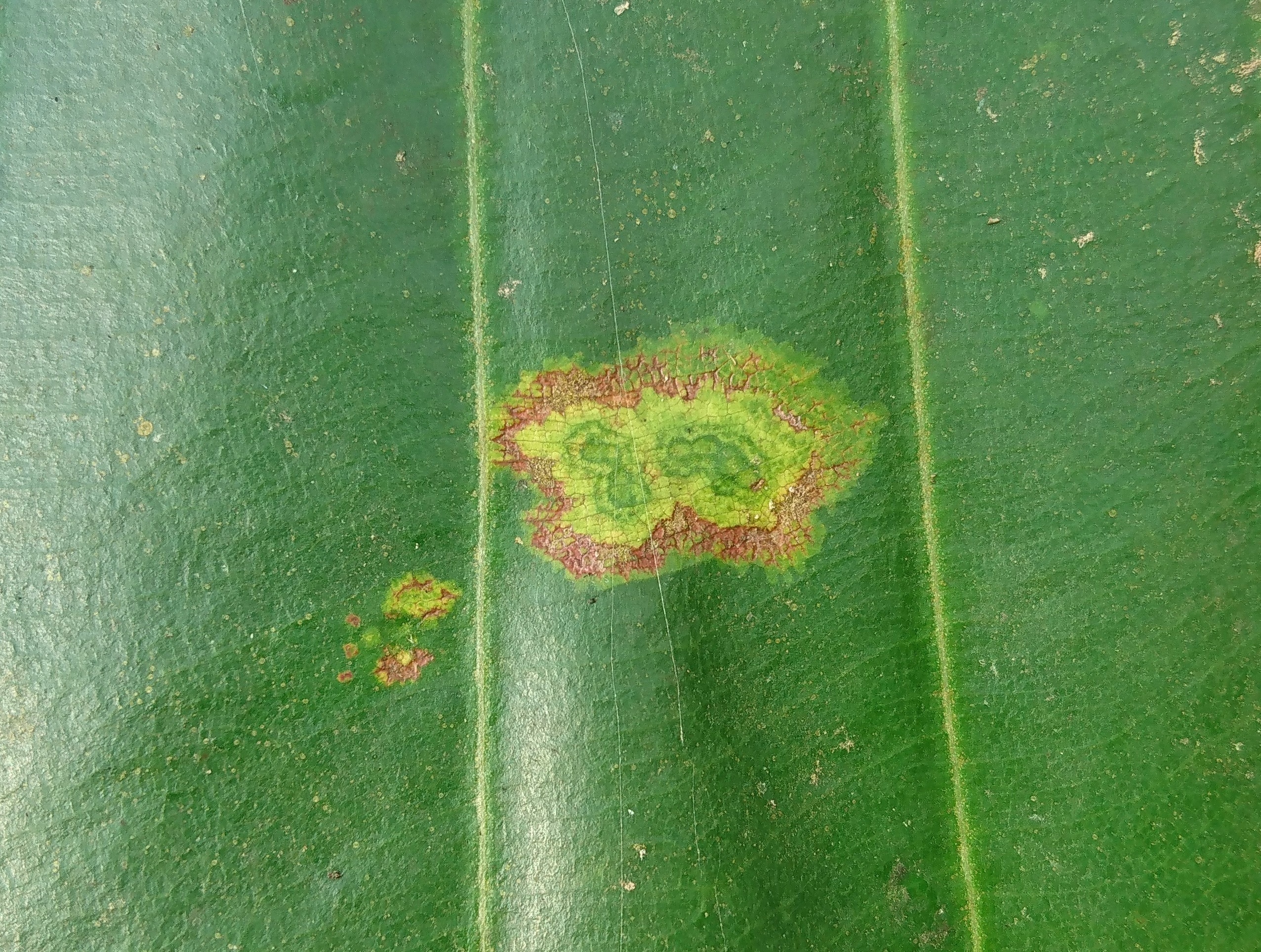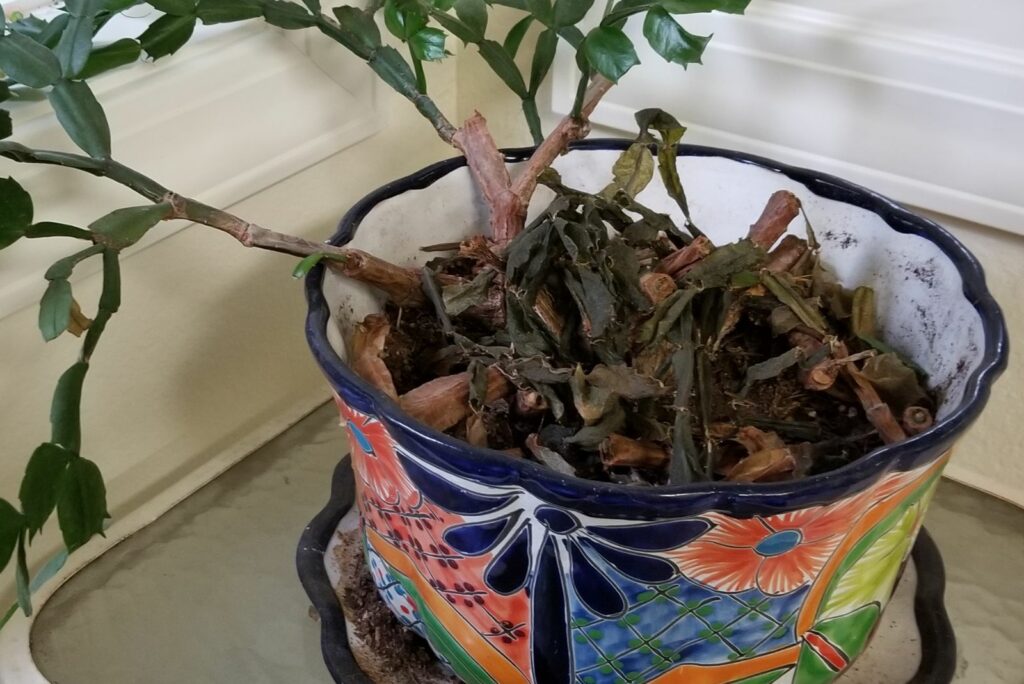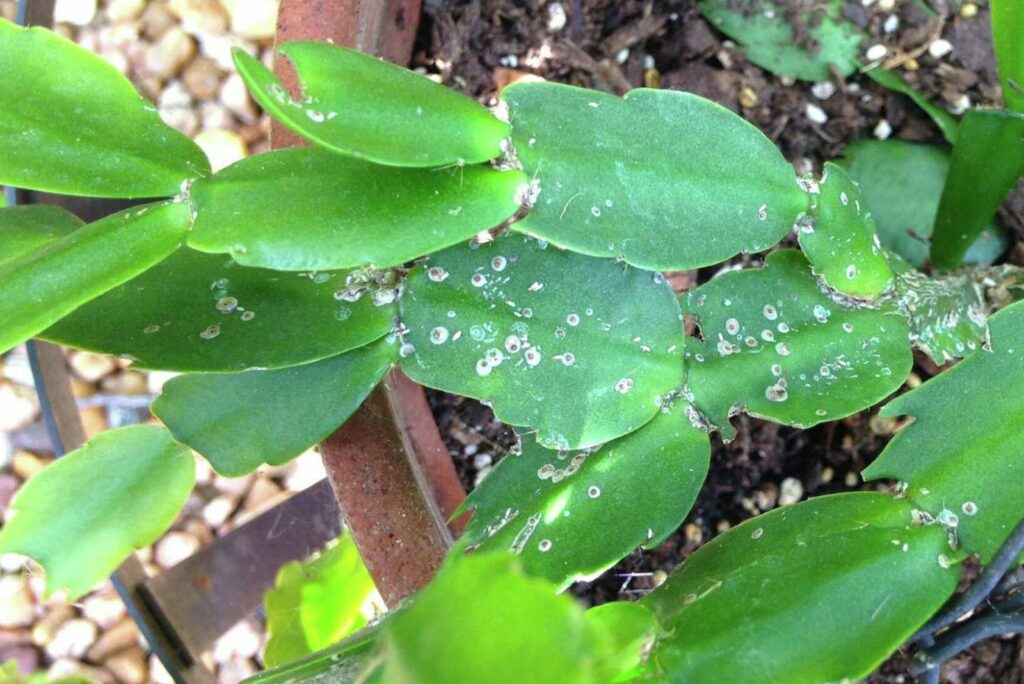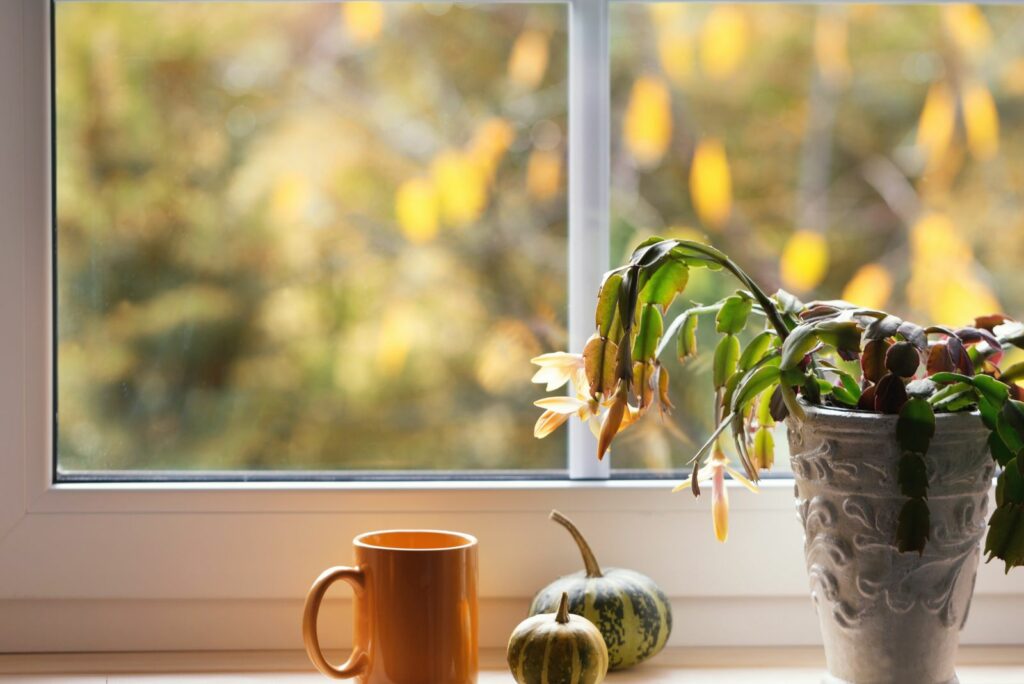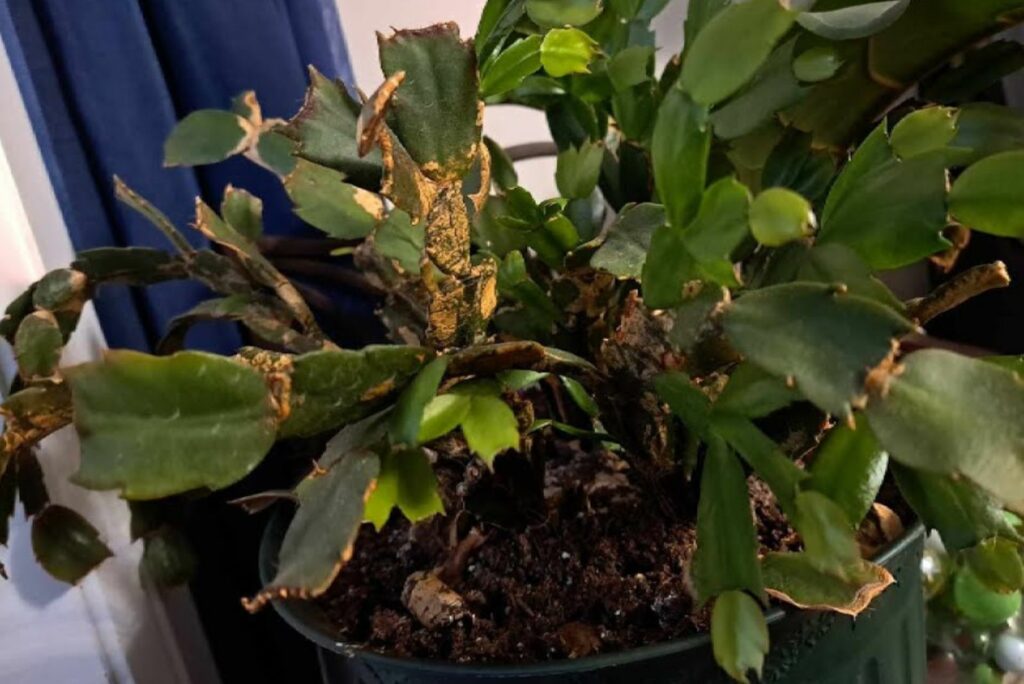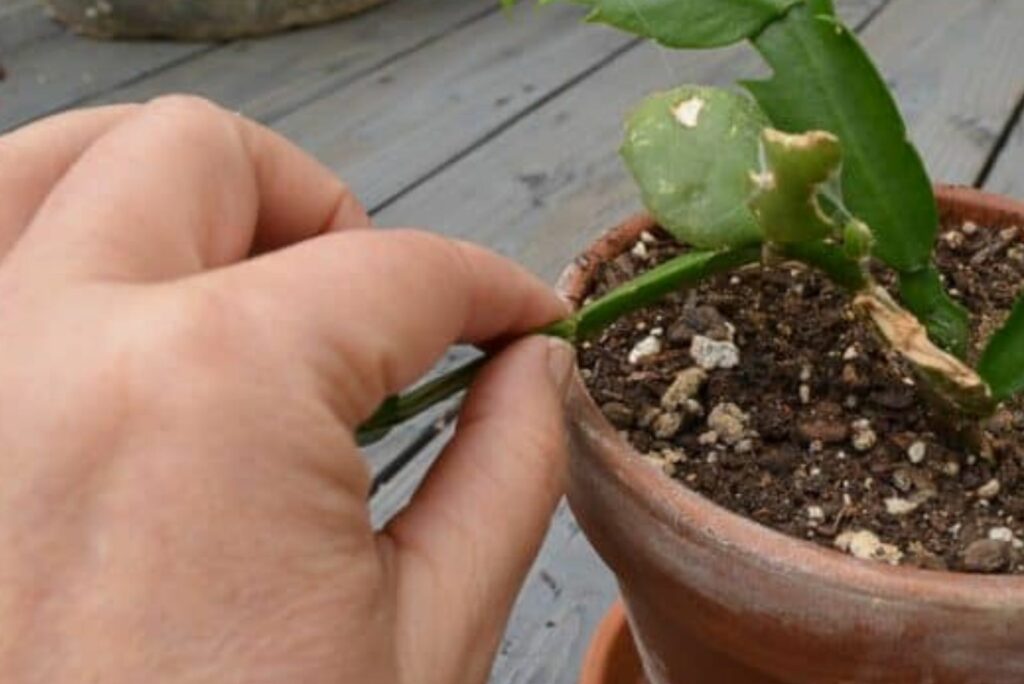Christmas cactuses adorn households worldwide and they’re especially popular during the festive season or when they’re most frequently in bloom.
Maintaining their emerald green foliage and splendid blossoms isn’t hard, which is another reason why gardeners love these plants.
However, there’s no such thing as a problem-free plant and the Christmas cactus isn’t an exception. Discoloration, wilting, and droopiness are just a few of the conditions that can affect this holiday cactus.
Even though these plants aren’t prone to diseases, some may occur and cause damage. In this article, I’ll show you some of the most common Christmas cactus diseases and how to treat and prevent them.
Let’s get started!
1. Root Rot
One of the most common Christmas cactus diseases, and this applies to houseplants in general, is root rot disease. (1)
It typically attacks plants grown in waterlogged soils and, in the case of the Christmas cactus, the new root tips are the main target of the pathogens that cause root rot.
How To Identify
The easiest way to identify this dangerous disease in your holiday cactus is to look for signs of wilting and poor growth.
The main problem is that the plant displays these symptoms last and the parts below the soil line are already rotten.
If the root rot hasn’t progressed yet, your soil may be dark and mushy to the touch and it could emit an unpleasant smell.
How To Prevent
The best way to fight this notorious disease is to prevent it. You may think that’s easier to say than to do but for the Christmas cactus, trust me, the last thing you want is to have to save it from root rot.
As mentioned before, overly wet soils are the ideal environment for pathogens, so your first task is to water your Christmas cactus according to a recommended schedule.
So, always check the moisture level in the soil using either your finger or a moisture meter. Water when the Christmas cactus soil is about 2 inches dry below the surface.
Additionally, make sure you put your holiday cactuses in planters that have drainage holes.
How To Treat
If your Christmas cactus is already displaying root rot symptoms, there is a way to revive it.
First, you need to take the plant out of its pot and cut off all the diseased and discolored roots. It’s essential to use sharp and sanitized tools because you don’t want the disease to spread.
Thoroughly sanitize the container (old or new) and add a free-draining and porous growing substrate.
Don’t feed your Christmas cactus after repotting to help it adjust and recover more easily.
2. Stem Rot
Another disease that can occur in this holiday cactus is basal stem rot, commonly known as stem rot. (2)
How To Identify
If your Christmas cactus suffers from this disease, it will first display a brown spot on the stem closest to the soil line.
The disease will soon progress and the spot will turn tan and the plant will slowly start losing tissue.
Yellowing and wilting are also symptoms of stem rot, as well as brown spots that look like water lesions on the plant foliage.
How To Prevent
Prevention methods are similar to those of root rot disease, so be very careful when watering your Christmas cactus.
It’s better to leave the growing substrate on the drier side than to add water to already wet soil.
How To Treat
If your Christmas cactus is already suffering from stem rot, you can treat it with fungicide, such as copper fungicide.
You can also remove some damaged tissue using a sanitized pair of scissors, but leave as many healthy plant parts as possible.
I also recommend saving a few healthy Christmas cactus cuttings and propagating them.
3. Botrytis Blight
Even though Botrytis Blight is a common garden fungal disease, it can also affect ornamental plants. Decaying foliage and soil moisture are the favorite sources of food for the fungus that leads to this disease. (3)
How To Identify
Christmas cactus that has grey mold aka Botrytis Blight will first display grey and fuzzy growth. This can occur in all plant parts, including stems, blossoms, and foliage.
It’s not uncommon for a holiday cactus with grey mold to display fuzzy growth on the surface of the soil.
How To Prevent
High humidity is most commonly the culprit for grey mold but the problem is that this holiday cactus likes some humidity.
What to do? First, always remove any fallen blossoms or leaves and prune your Christmas cactus if there are some unhealthy stems.
Good air circulation is crucial so keep your holiday cactus away from other houseplants.
When irrigating, make sure you don’t pour water over the foliage of your Christmas cactus.
How To Treat
Treating is very similar to prevention, so your first goal is to improve air circulation around the plant.
For an already infected holiday cactus, remove all the diseased tissue and dispose of it (don’t add it to your compost pile).
Make sure you sanitize your cutting tools, watering cans, or any other tools you use.
If the disease progresses, you can treat your Christmas cactus with a fungicide.
4. Powdery Mildew
If you have an outdoor garden, I’m sure you’ve already heard of powdery mildew. (4) Luckily, this disease isn’t dangerous and you can easily fix it if you treat it in time.
How To Identify
The telltale sign of powdery mildew in Christmas cactus is a white powderish substance on all plant parts and the soil surface.
In some cases, leaves on your holiday cactus can display rust-colored spots.
How To Prevent
The ideal environment for this disease is humid, damp, and shady. First, promote air circulation around your Christmas cactus and keep it away from other houseplants.
Second, water only at the plant base because watering over the foliage leads to various diseases, not only powdery mildew.
And third, make sure your Christmas cactus receives enough bright indirect sunlight; if you keep it outdoors, don’t place it in shady spots.
How To Treat
This disease most likely won’t kill your Christmas cactus and one of the ways to treat it is to apply neem oil or copper fungicide.
If you decide on one of these solutions, you must apply them according to the instructions on the label.
5. Necrotic Spot Virus
This is one of the most dangerous Christmas cactus diseases and the main culprit is thrips. (5)
How To Identify
One of the most common signs of Necrotic spot virus in holiday cactus is yellow foliage.
If the thrips continue feeding on the plant, the stems and leaves will also wilt.
How To Prevent
The easiest way to prevent pests in general is to inspect your Christmas cactus regularly.
You can put sticky traps in the container to catch thrips early.
How To Treat
This is one of the hardest diseases to treat. Once you remove all the thrips from your holiday cactus, you can isolate the plant.
The next step is to get rid of the infected soil and cut off all the diseased Christmas cactus tissue. Then repot the plant, but make sure you use a new growing substrate and sterilized container.
Clean and sanitize your tools, put all the infected tissue in a plastic bag, seal it tightly, and discard it.
I know how disheartening it can be to see your Christmas cactus in distress, so work on prevention. If any disease occurs in your holiday cactus, follow our methods to treat it!
6. Phytophthora Blight
Phytophthora blight is a water mold disease that can wreak havoc on Christmas cactuses, especially in overly saturated soils. (6)
How To Identify
Look for blackened or brown areas on the stems and roots, which often spread quickly. Plants may exhibit sudden wilting, even though the soil is moist.
In advanced stages, the plant may collapse entirely due to the extensive damage to its root system.
How To Prevent
Avoid overwatering and ensure your pot has proper drainage.
Elevating pots off the ground or placing them on a dry surface can also help reduce the risk of contamination.
Keeping plants in well-ventilated areas can further limit the spread of water molds.
How To Treat
Remove and discard infected plant parts immediately. Replant in fresh, well-draining soil, and apply a systemic fungicide to help protect the remaining healthy plant.
Repeat fungicide applications as directed to ensure the disease doesn’t reappear.
7. Leaf Spot Disease
Leaf spot disease is caused by fungal or bacterial pathogens and often appears when humidity levels are too high. (7)
How To Identify
Circular, water-soaked lesions that eventually turn brown or black may appear on the leaves and stems of your Christmas cactus.
These spots can enlarge over time and merge, potentially leading to leaf drop if the infection is severe.
How To Prevent
Reduce humidity around your plant and avoid overhead watering. Maintain good airflow and prune any overgrown areas to prevent crowded foliage.
Always sterilize pruning shears to avoid spreading the disease during maintenance.
How To Treat
Remove affected leaves and use a copper-based fungicide to prevent the disease from spreading.
Ensure infected plant material is disposed of properly and not added to compost piles.
8. Fusarium Wilt
Fusarium wilt is a soil-borne fungal disease that can cause significant damage to Christmas cactuses if left untreated. (8)
How To Identify
Symptoms include yellowing leaves, wilted stems, and discolored vascular tissue visible in cut stems.
Over time, the plant may lose its ability to absorb water and nutrients, resulting in stunted growth or death.
How To Prevent
Use sterilized potting soil and ensure your tools are clean to avoid introducing the fungus.
Avoid overwatering, as Fusarium thrives in soggy conditions. Regularly inspect the plant for early signs of infection to act promptly.
How To Treat
Cut away infected plant parts and repot the plant in fresh, sterile soil. Applying a fungicide may help control the spread of the disease.
For severe cases, propagating healthy cuttings might be the only way to save the plant.
9. Anthracnose
Anthracnose is a fungal disease that affects many ornamental plants, including the Christmas cactus, especially in humid conditions. (9)
How To Identify
Brown, sunken lesions on leaves and stems, sometimes with pinkish spore masses, are common signs of anthracnose.
These lesions may eventually cause the affected parts to dry out and fall off, weakening the plant over time.
How To Prevent
Water at the base of the plant and keep the foliage dry.
Regularly remove debris and fallen leaves from around the plant to eliminate fungal spores.
Consider using a fungicide as a preventative measure if anthracnose is common in your area.
How To Treat
Prune and dispose of infected parts and apply a broad-spectrum fungicide as recommended on the label.
Be consistent with treatments, as the fungus can linger in the environment and re-infect the plant.
10. Bacterial Soft Rot
Bacterial soft rot is a serious disease caused by Erwinia species, which can rapidly decay plant tissue. (10)
How To Identify
Soft, mushy areas on stems and leaves, often accompanied by a foul odor, are signs of bacterial soft rot.
These areas can quickly spread, leading to significant tissue breakdown and loss of structural integrity.
How To Prevent
Ensure proper drainage and avoid any wounds on the plant, as bacteria often enter through damaged tissue. Sterilize tools before use.
Keeping the plant in a low-humidity environment can also minimize the risk of bacterial growth.
How To Treat
Remove affected tissue and repot your Christmas cactus in fresh soil. Treat the remaining plant with a bactericide to prevent further spread.
If the plant is severely infected, you may need to take healthy cuttings for propagation and discard the rest of the plant.
I know how disheartening it can be to see your Christmas cactus in distress, so work on prevention. If any disease occurs in your holiday cactus, follow our methods to treat it!
References
1. Hudelson. (2015, August 15). Root rots on Houseplants | Plant Disease Diagnostics Clinic.
2. Kluepfel, M. (2022, July 21). Houseplant Diseases & Disorders | Home & Garden Information Center. Clemson University, South Carolina.
3. Doubrava, N. (2022, July 20). Gray Mold (Botrytis Blight) | Home & Garden Information Center. Home & Garden Information Center | Clemson University, South Carolina
4. Powdery Mildews. (2016, February 22). Colorado State University Extension
5. Impatiens Necrotic Spot (INSV) (2015, July 24)| Plant Disease Diagnostics Clinic.
6. Patel, et al. (2016). Characterization of Phytophthora spp. isolated from ornamental plants in Florida. Plant Disease
7. Fungal Leaf Spots on Indoor Plants (2023, March 13). University of Maryland Extension.
8. Fusarium Wilt in Houseplants. (2021). University of MinnesotaExtension.
9. Plant Disease Handbook: Anthracnose (2022, October 21). Texas A&M AgriLife Extension.
10. Bacterial Soft Rot. (2024, February 28). Plant Pathology Department, University of Wisconsin.

